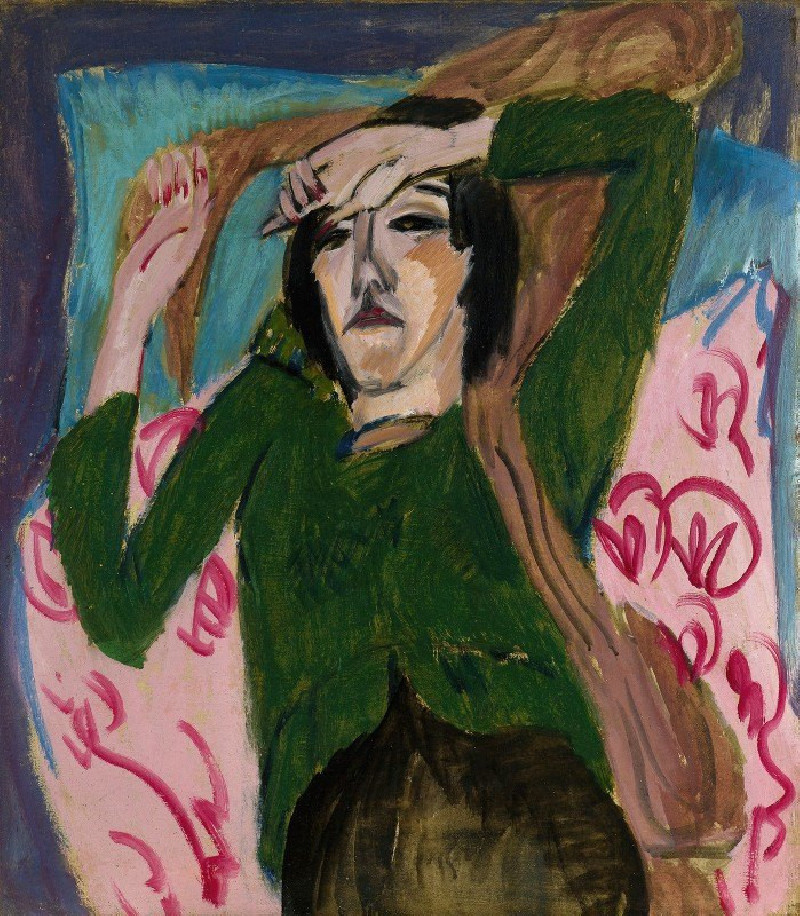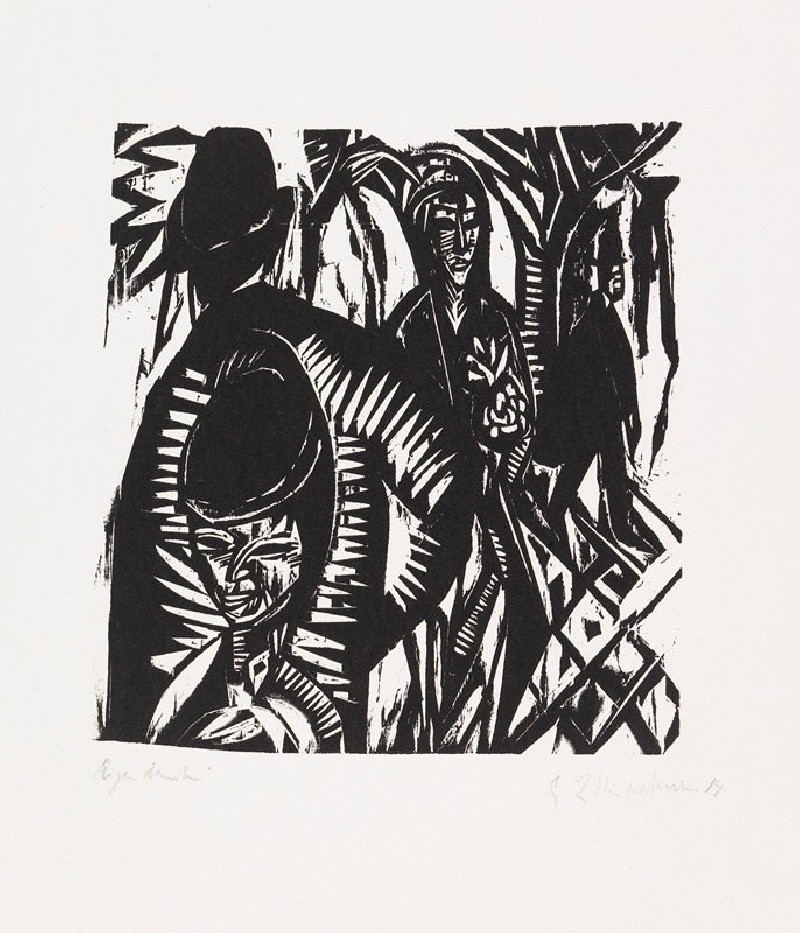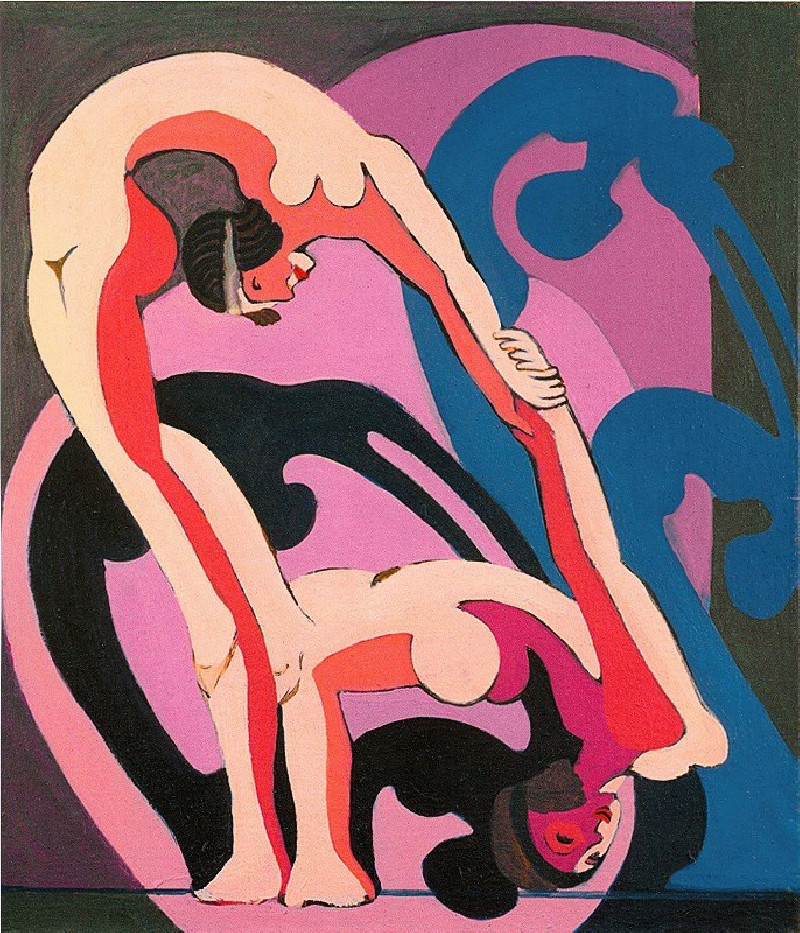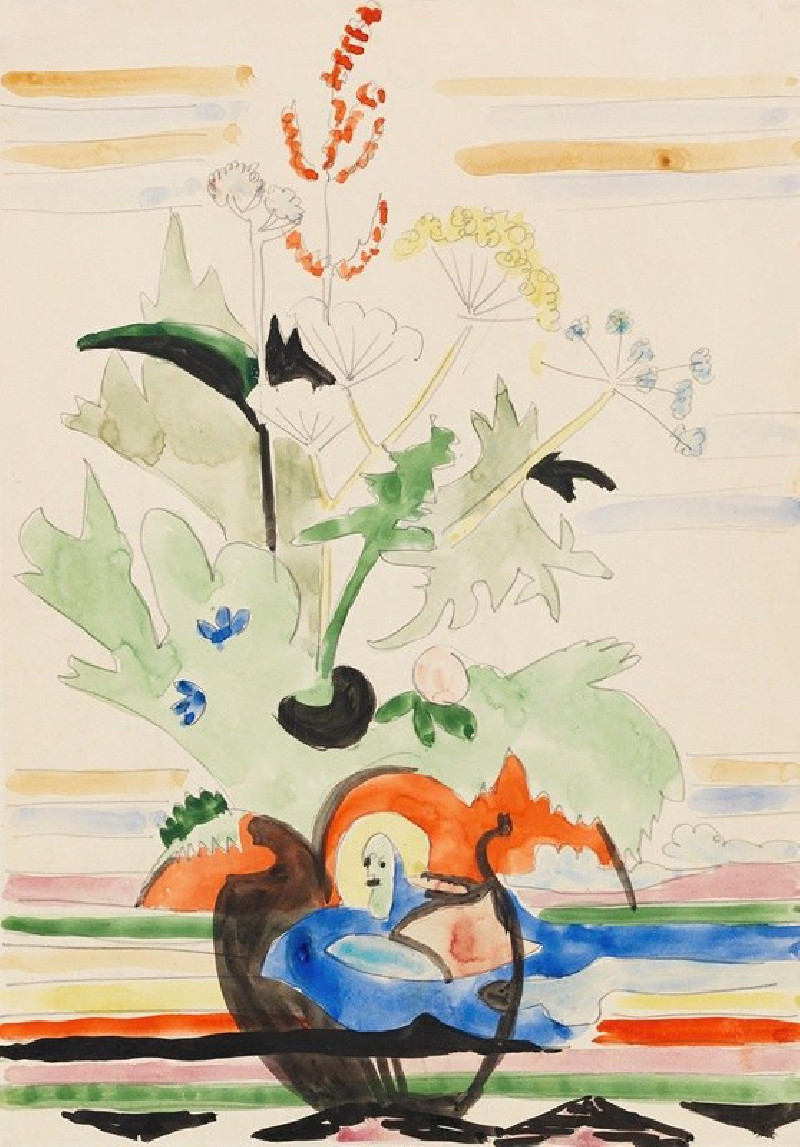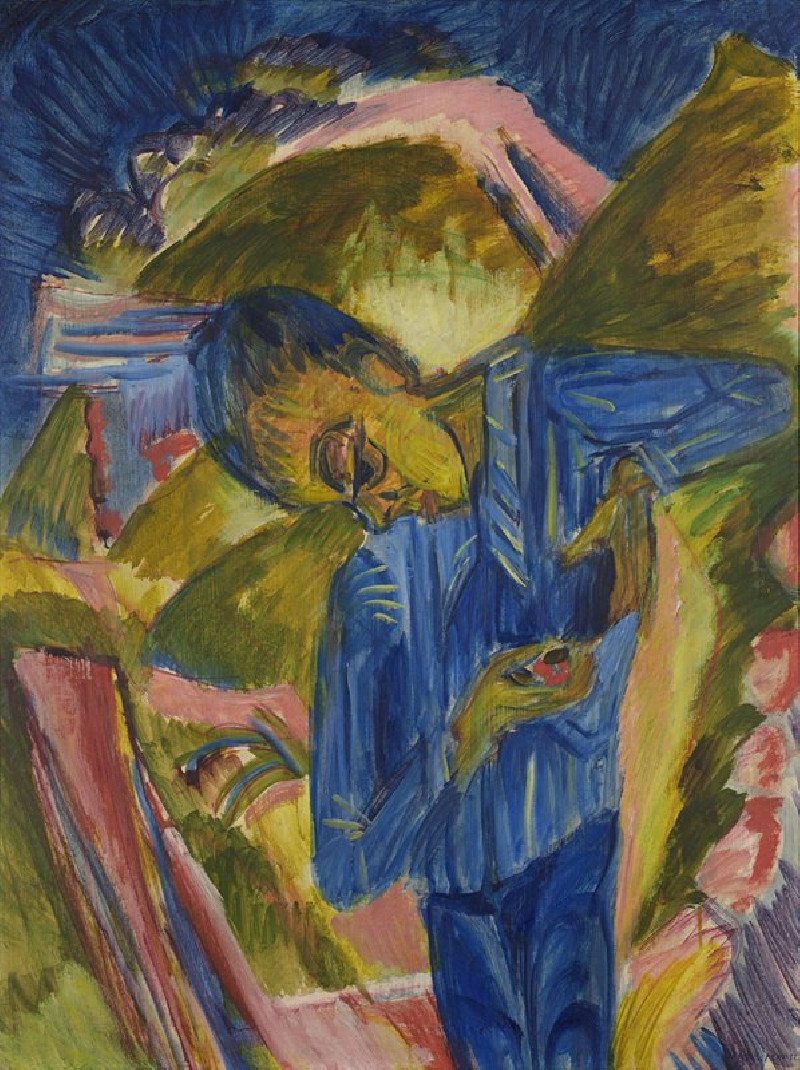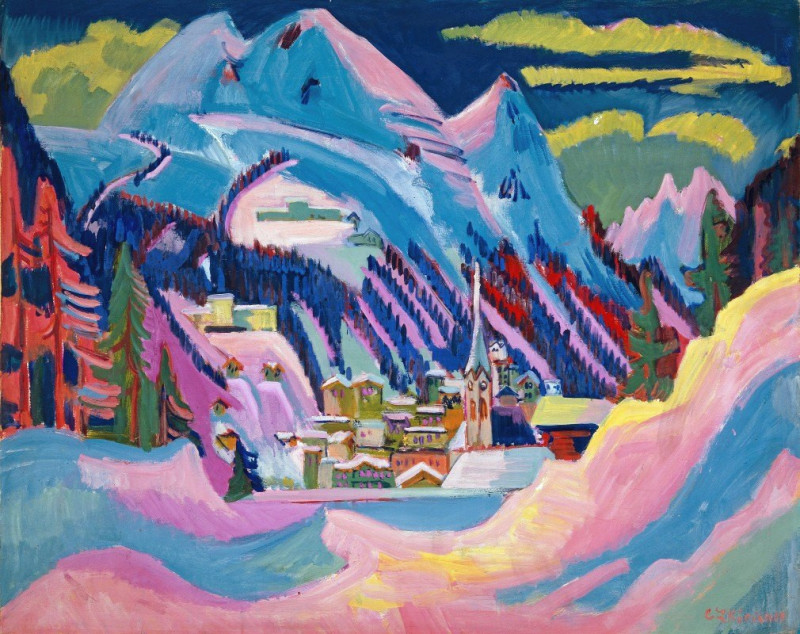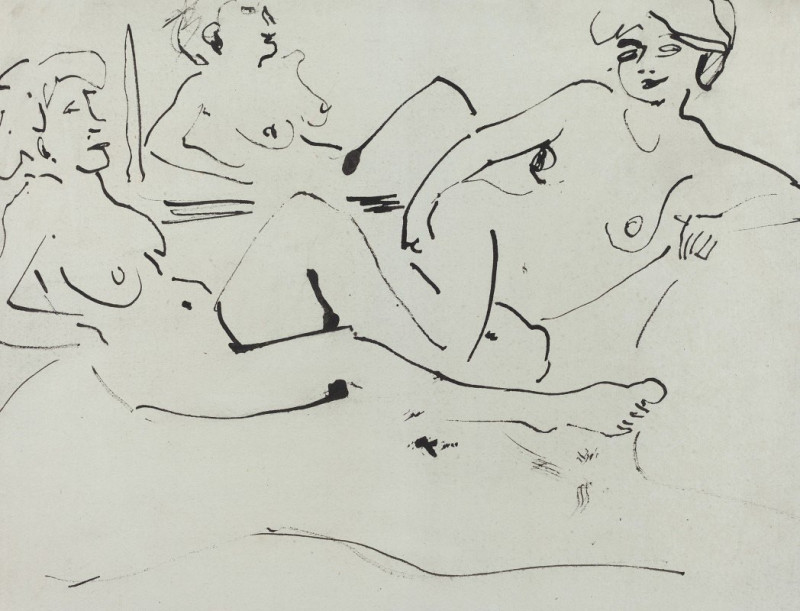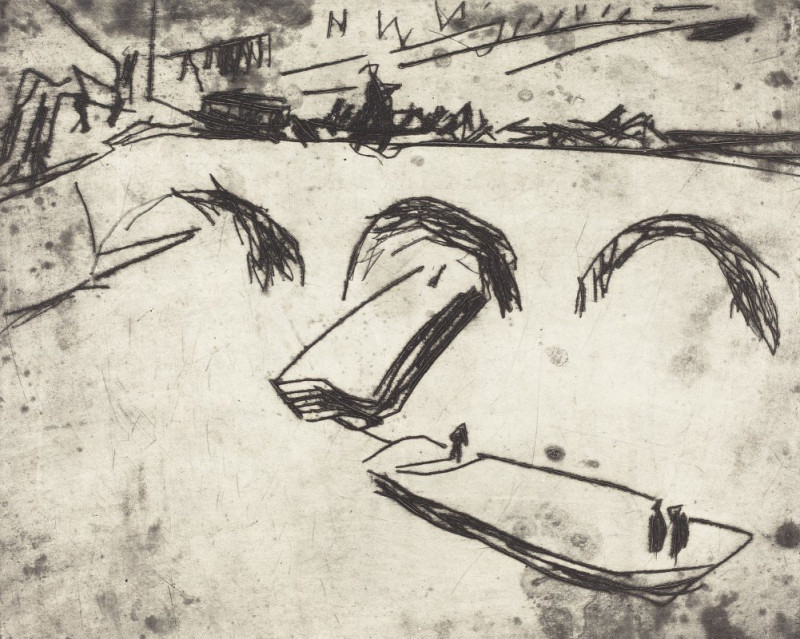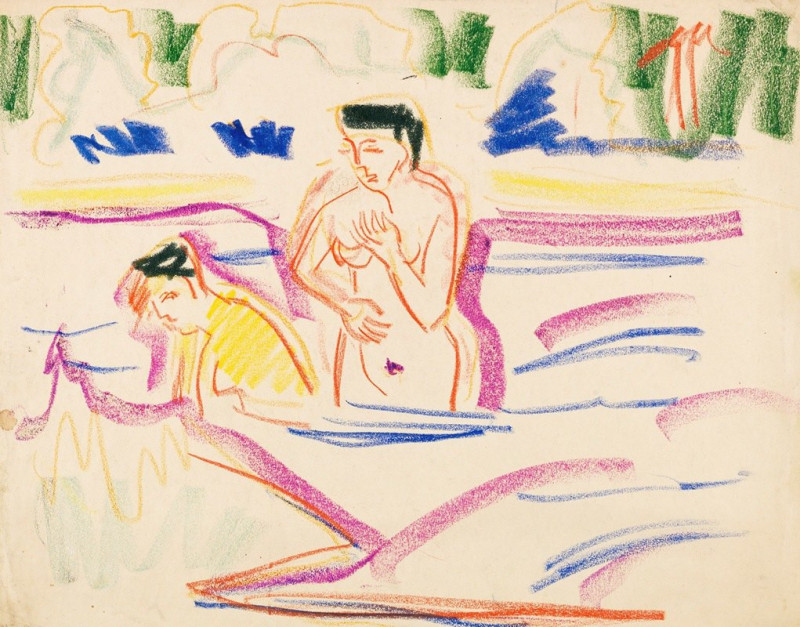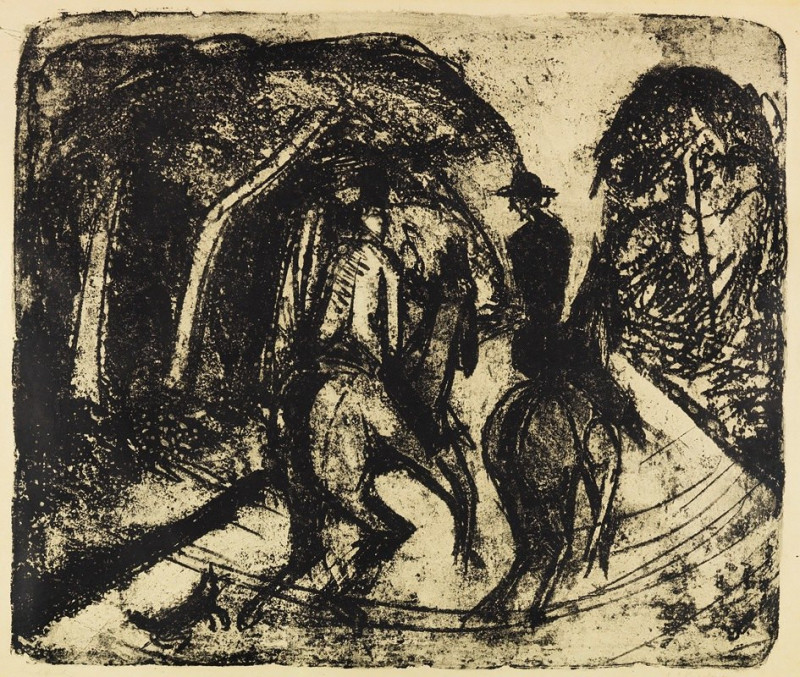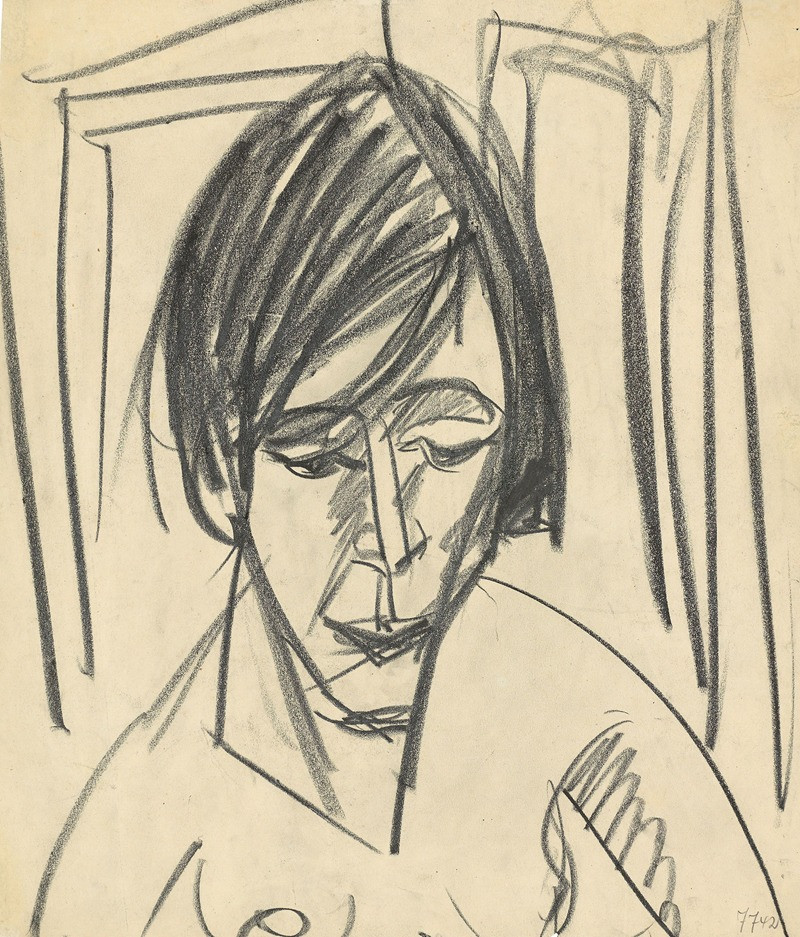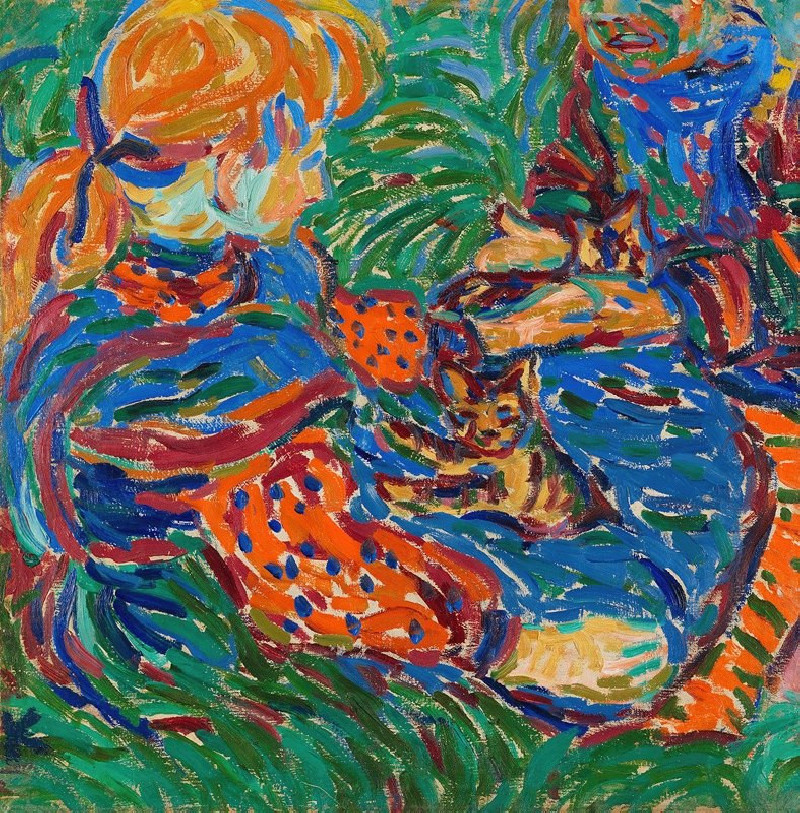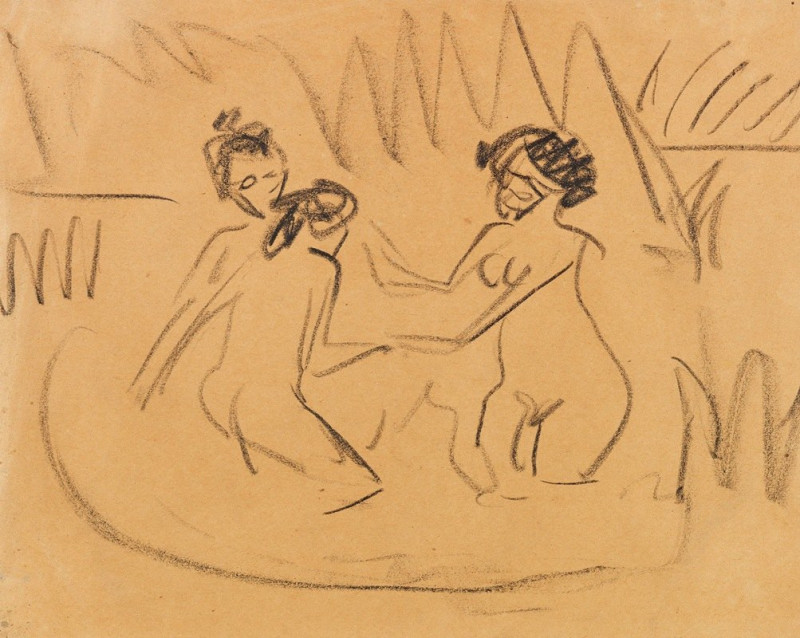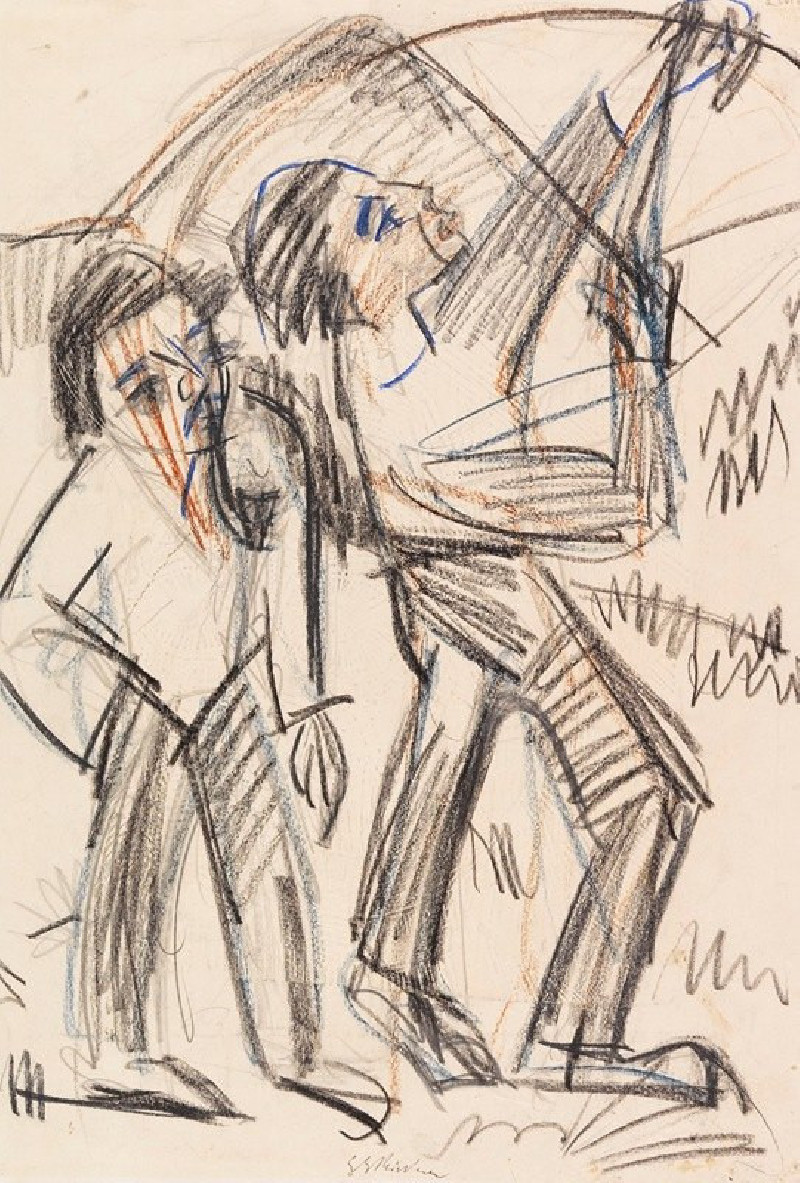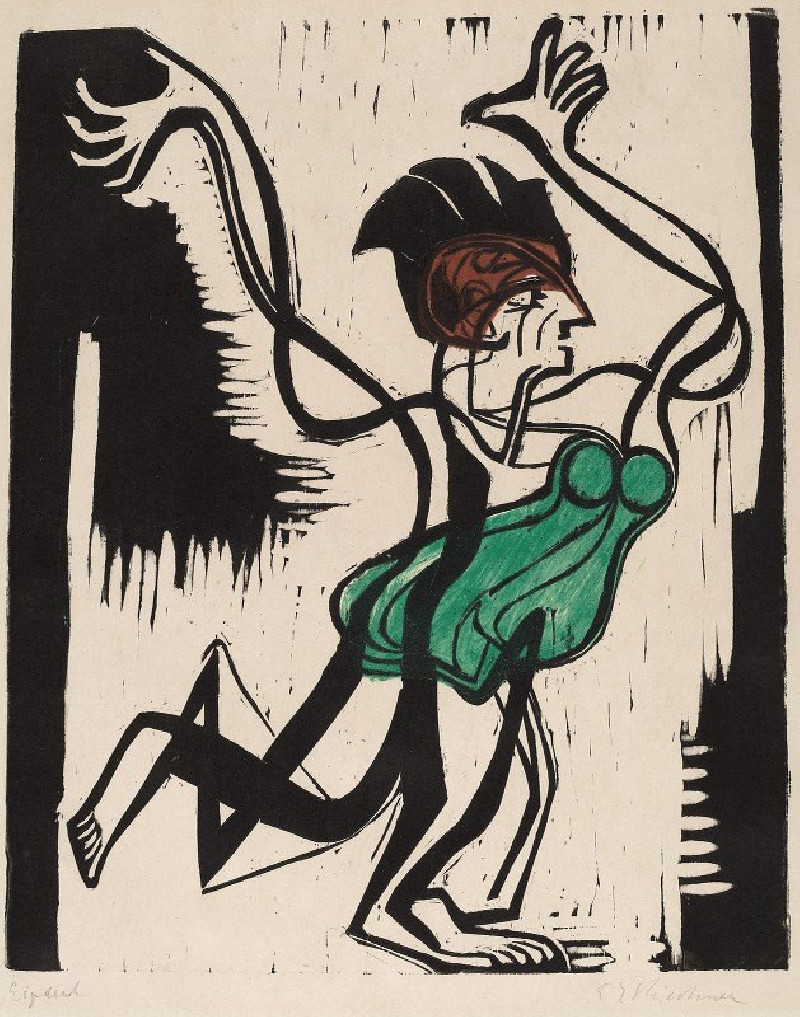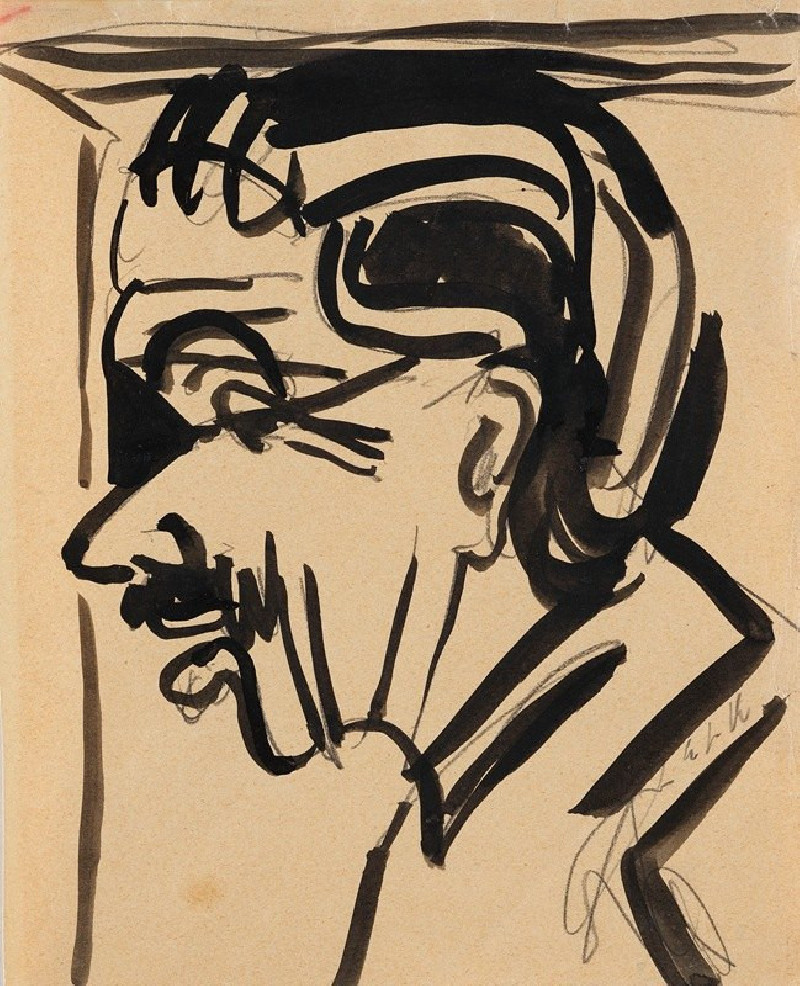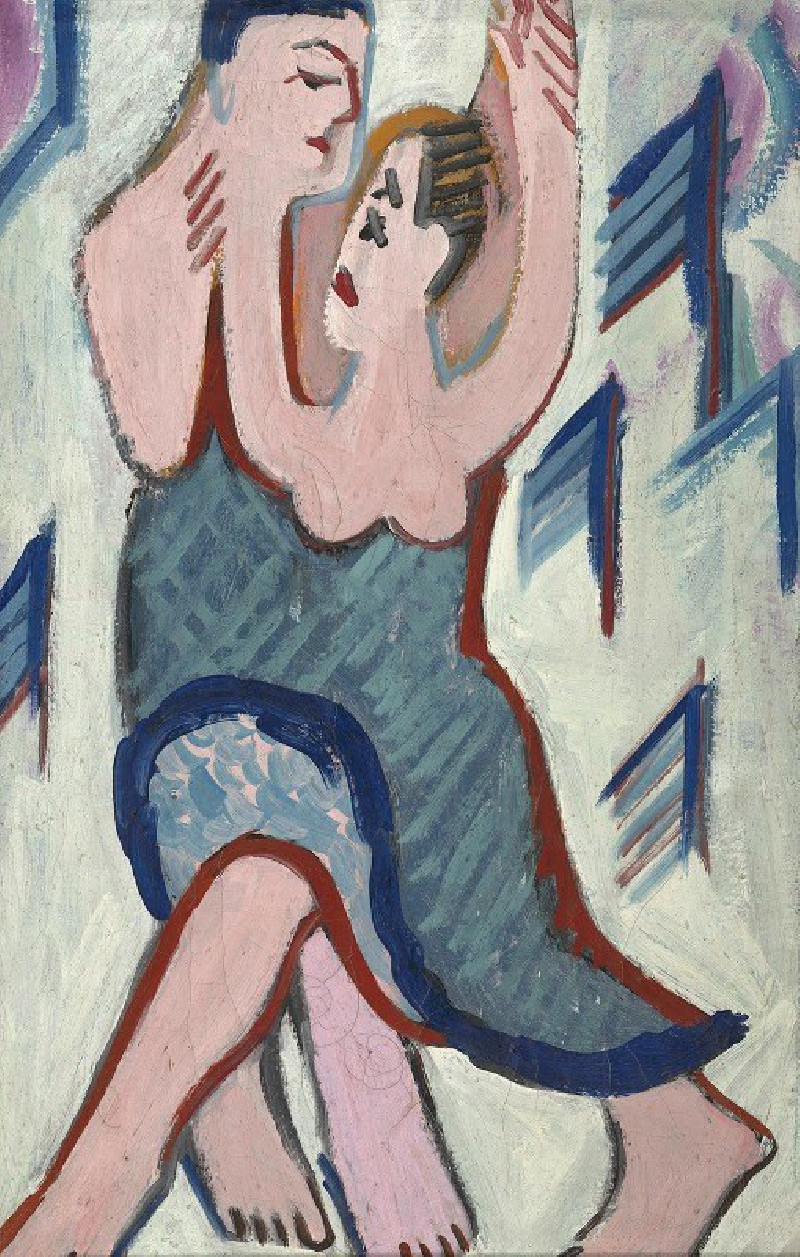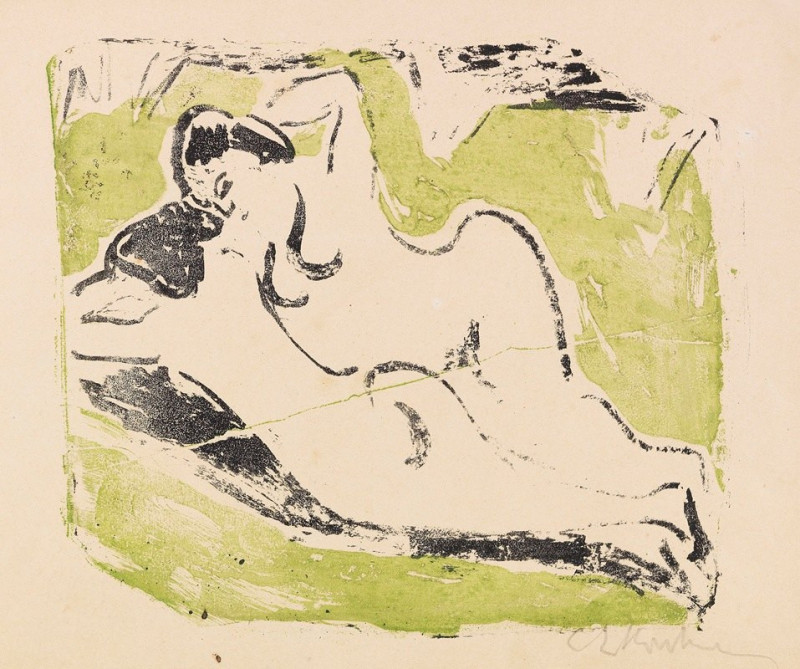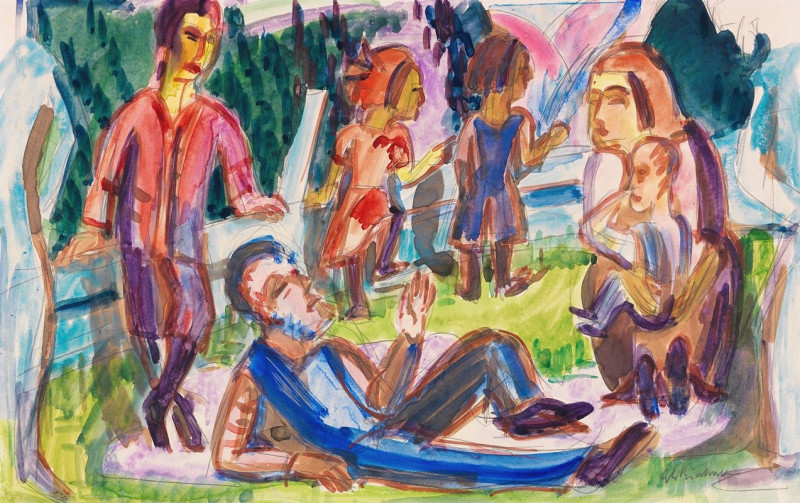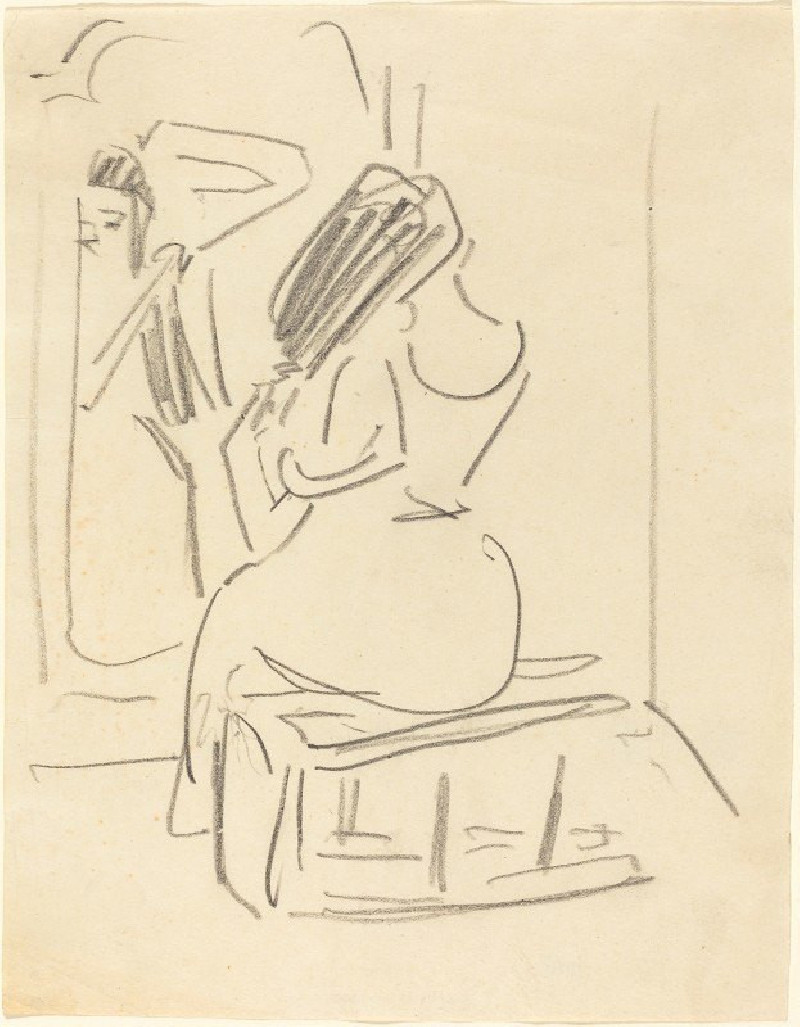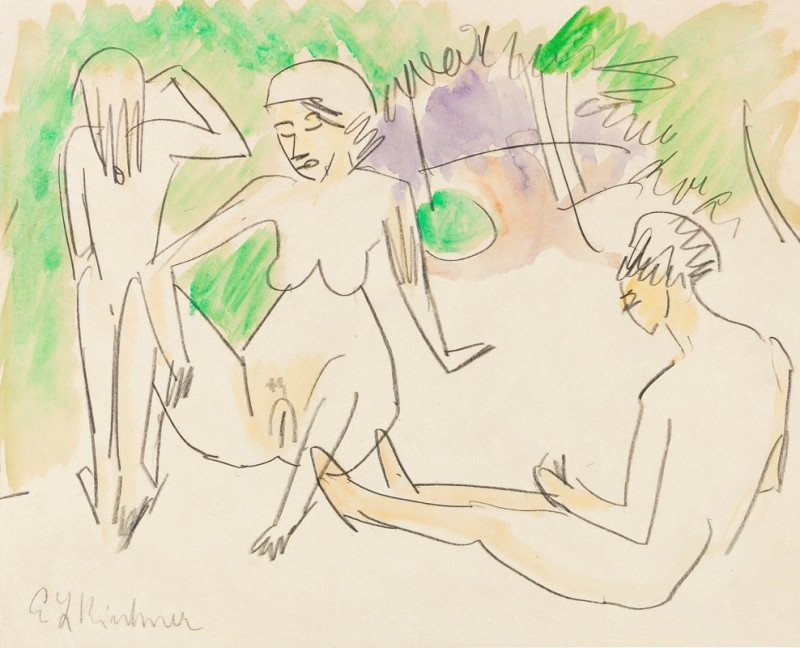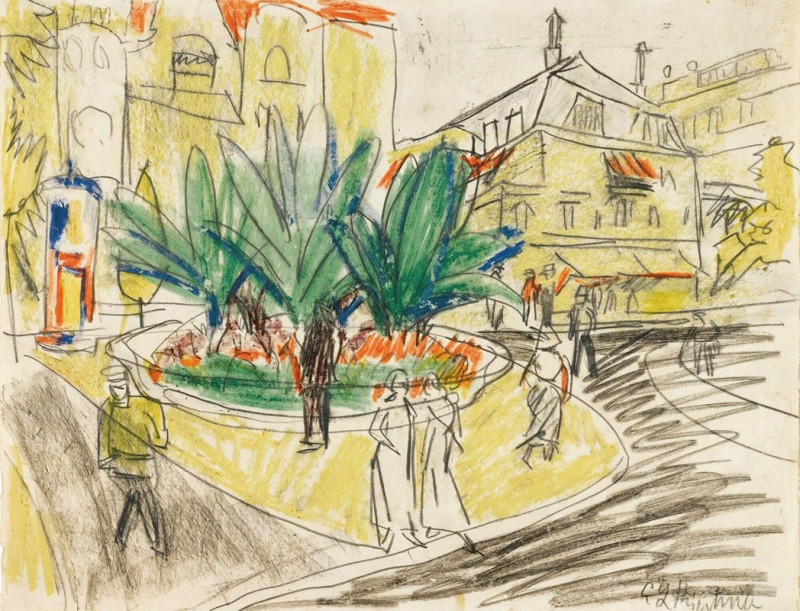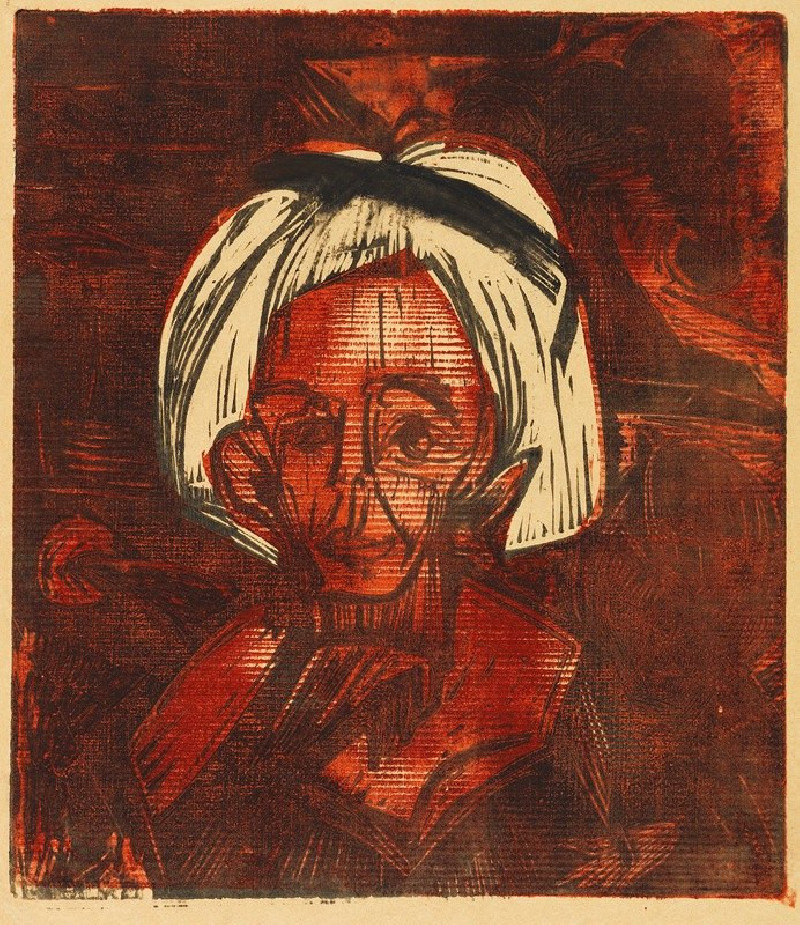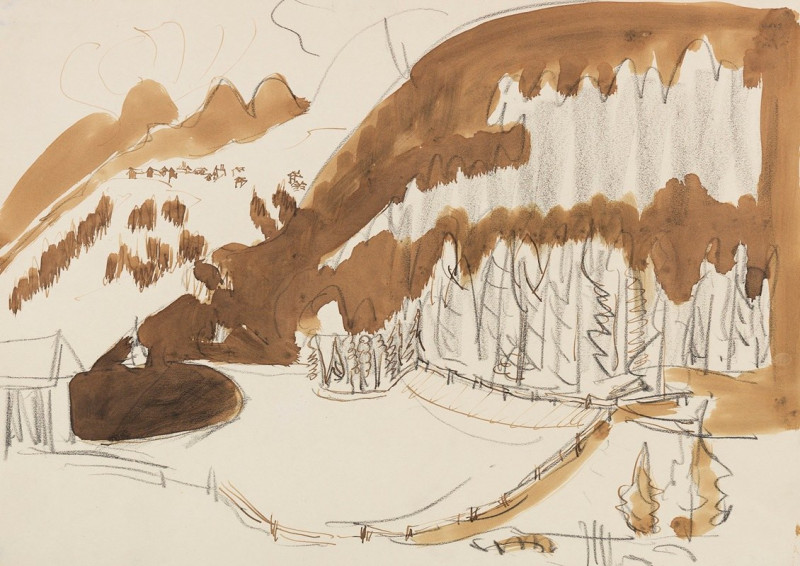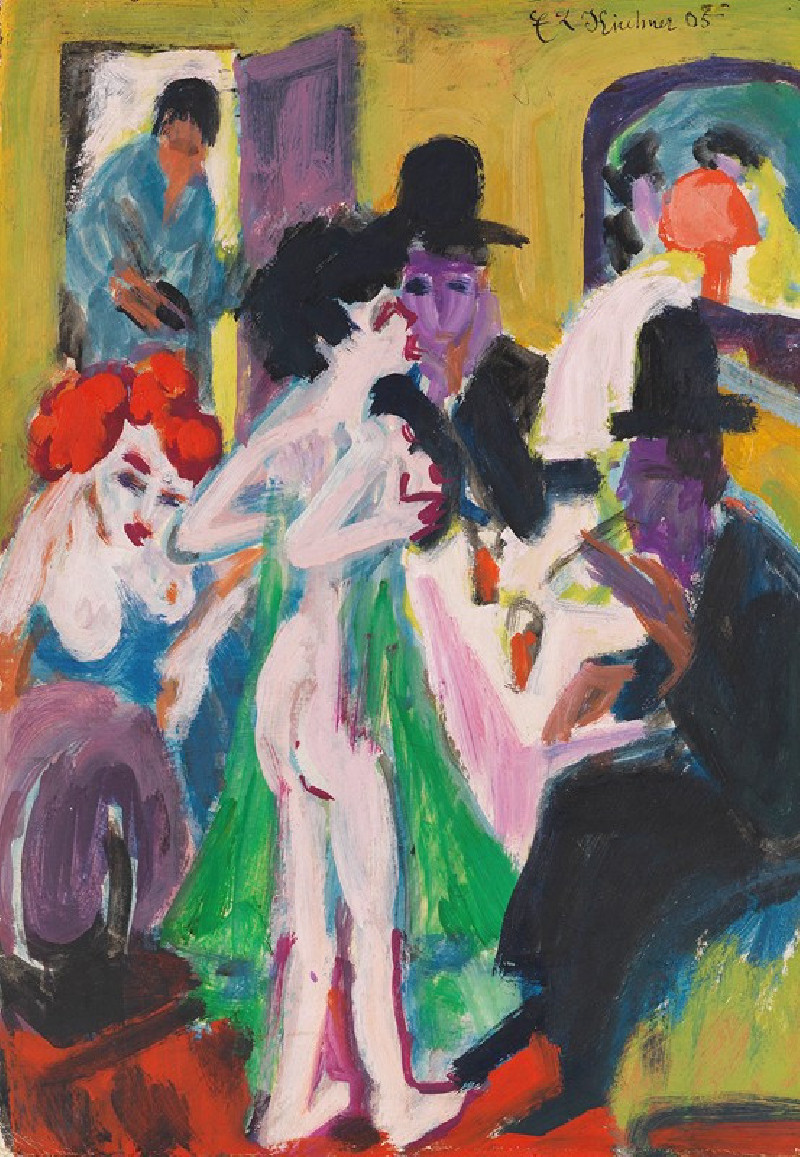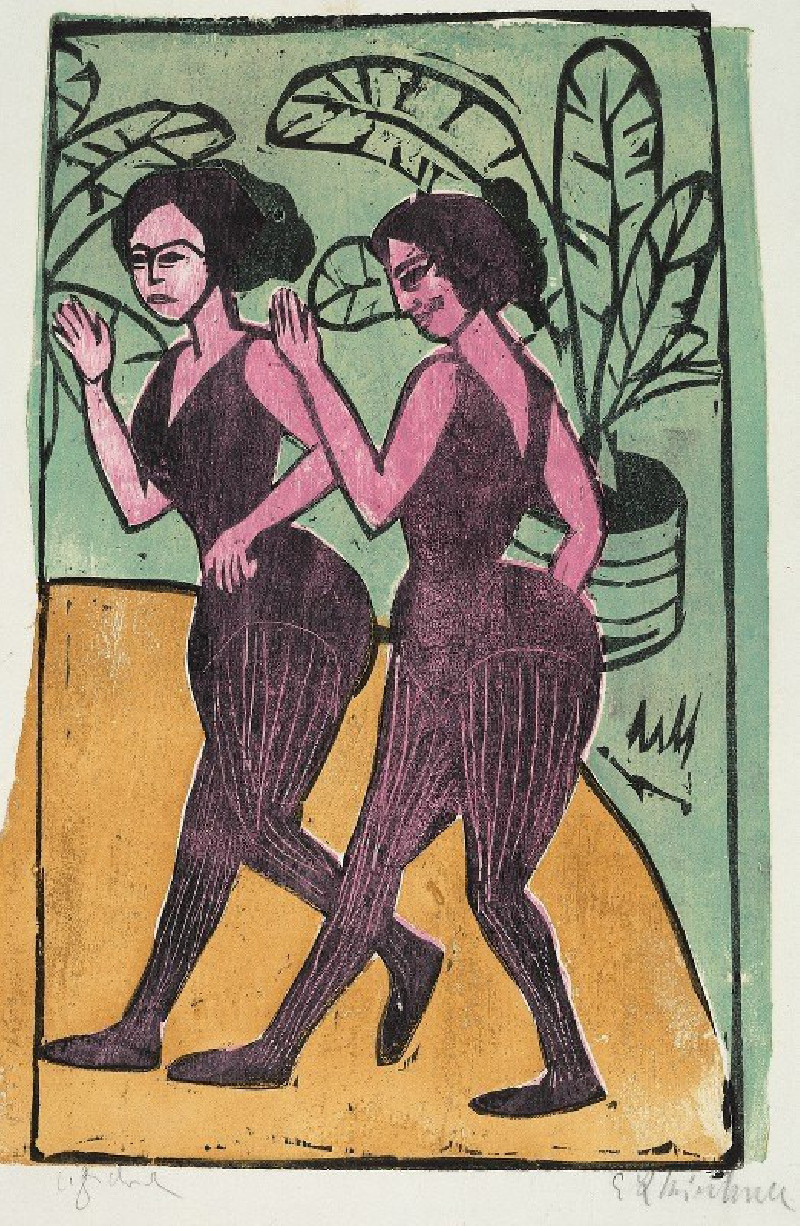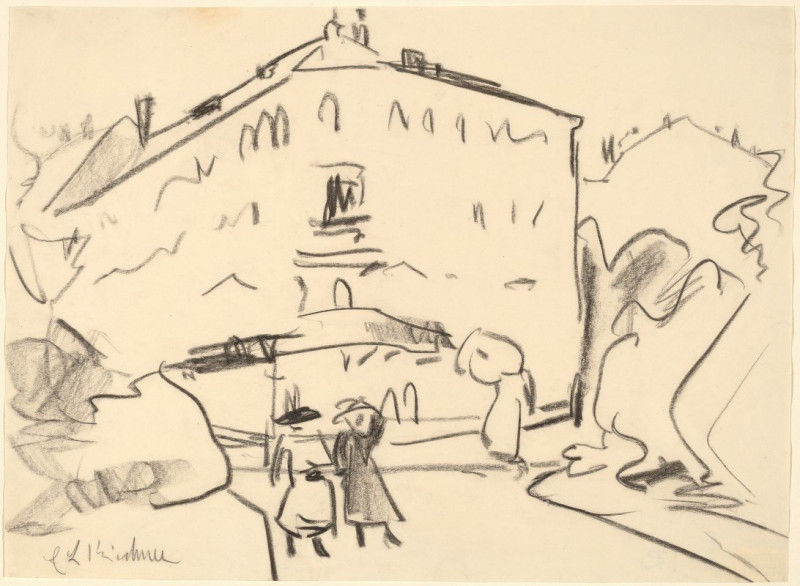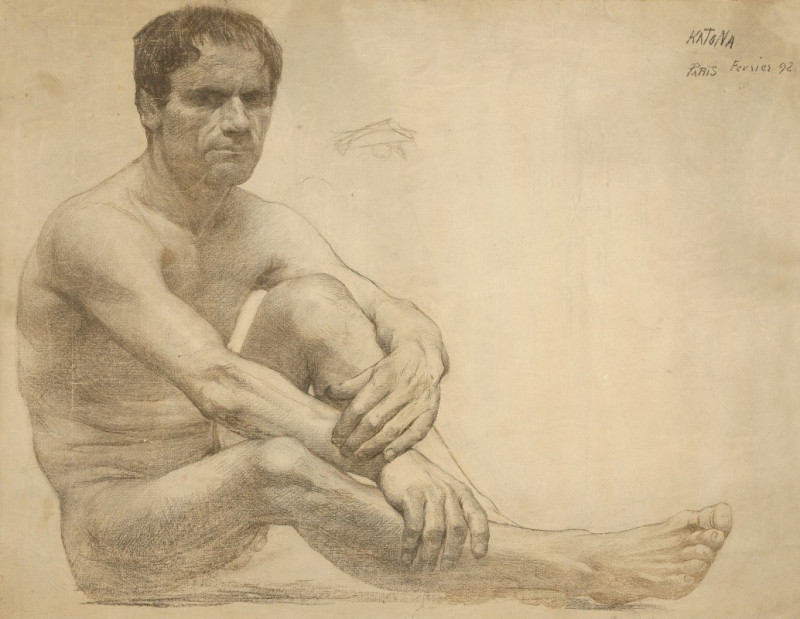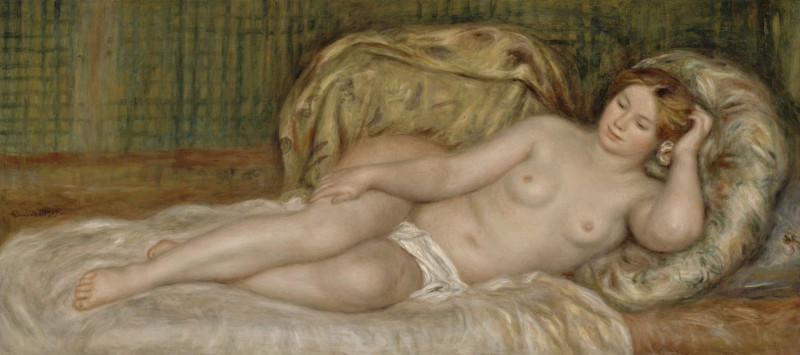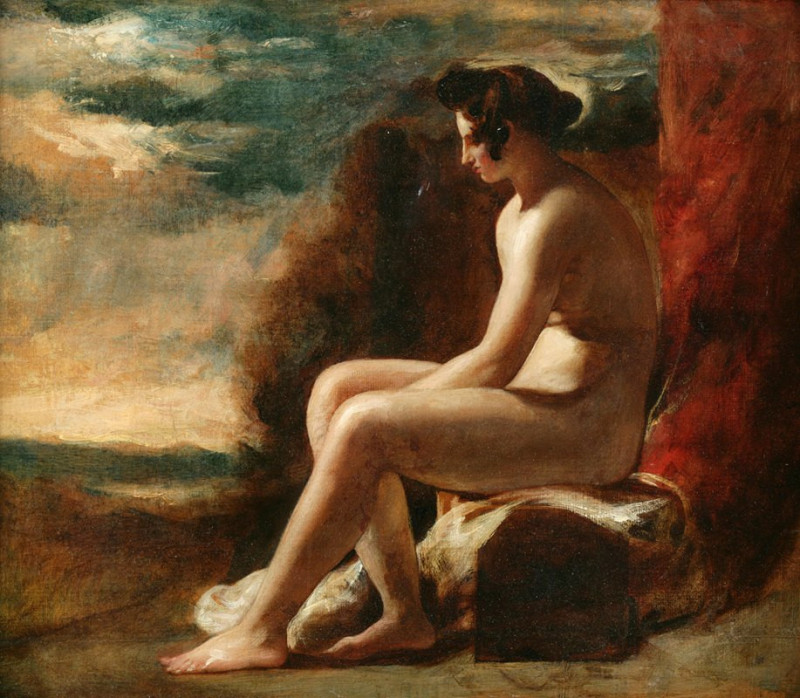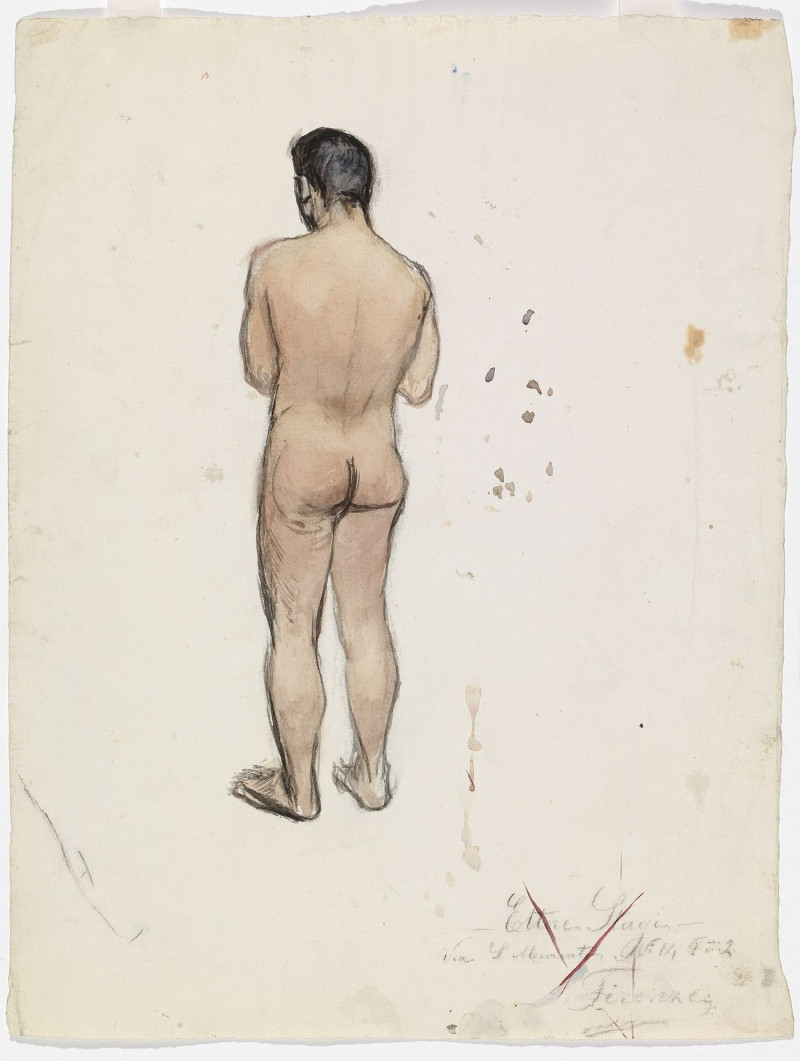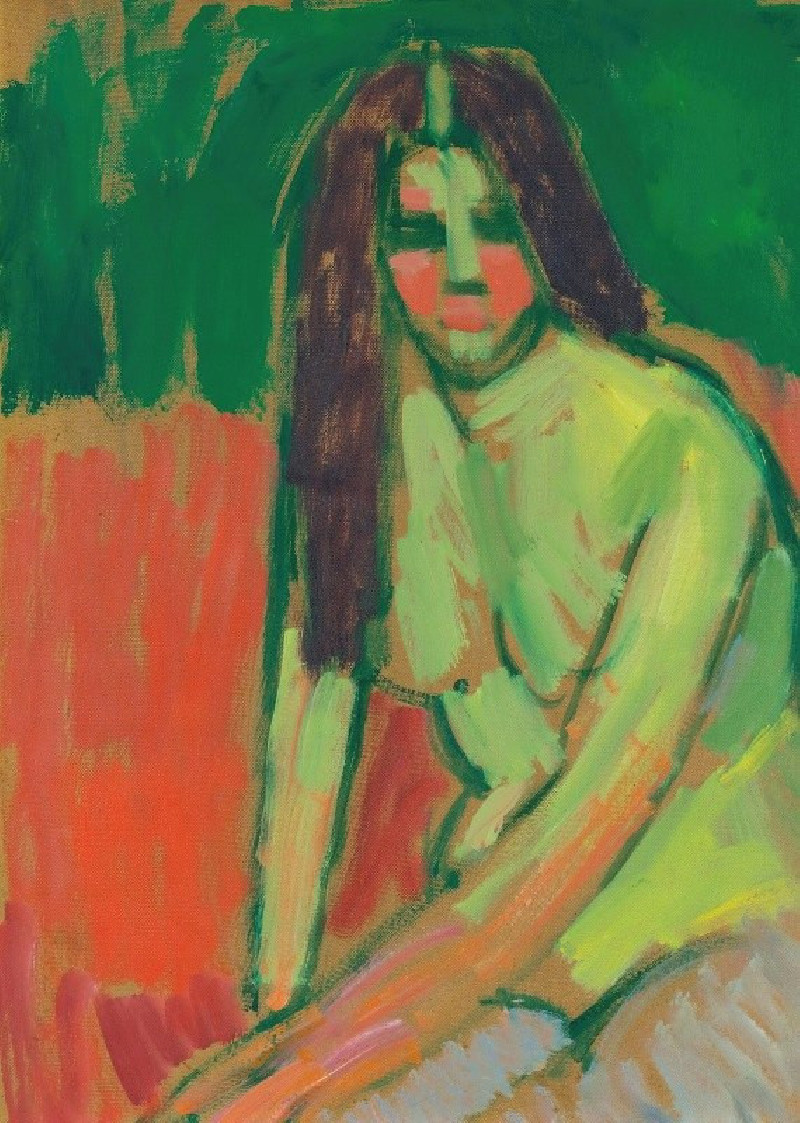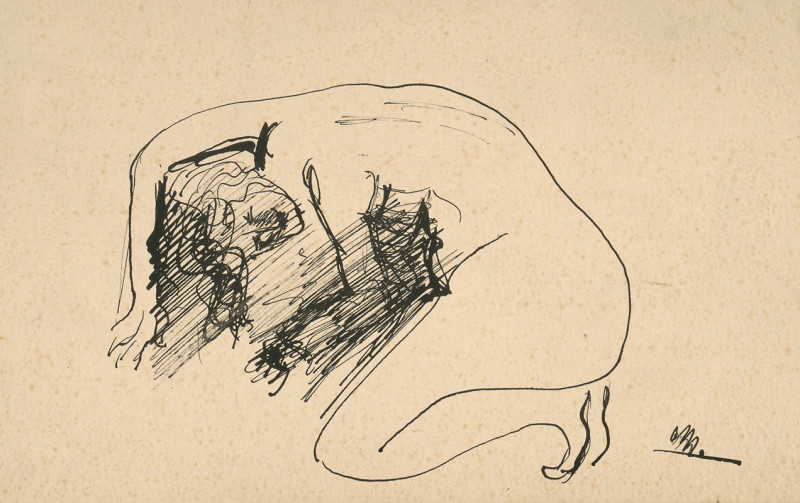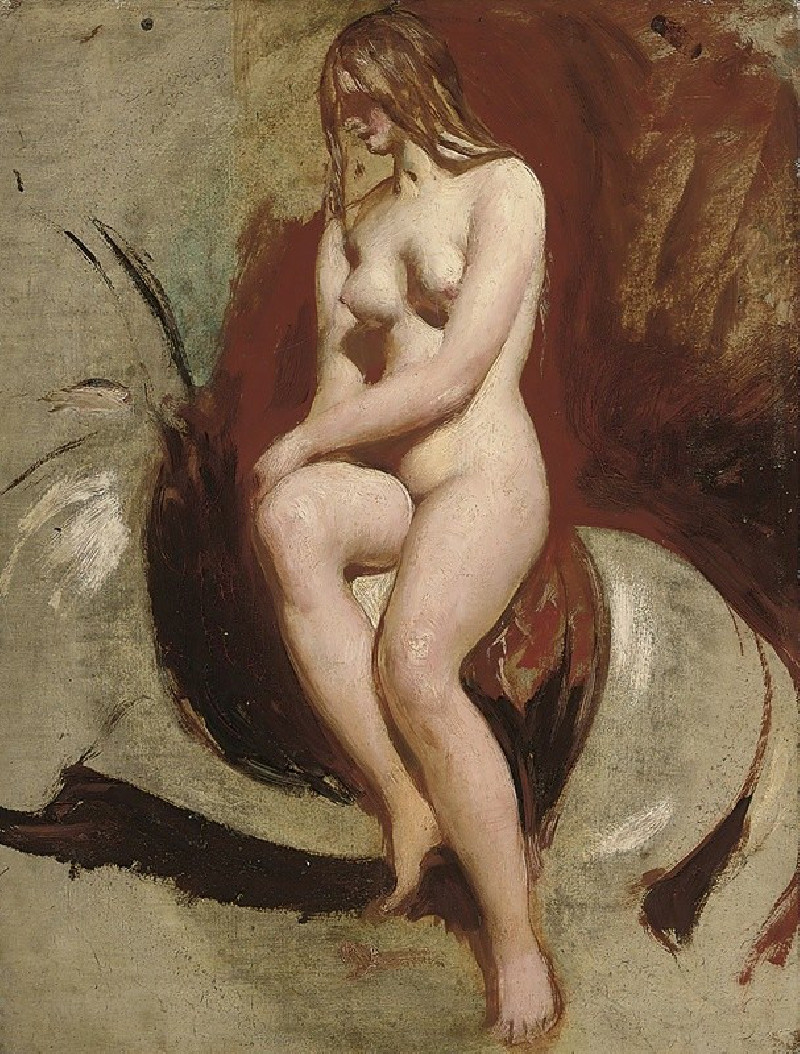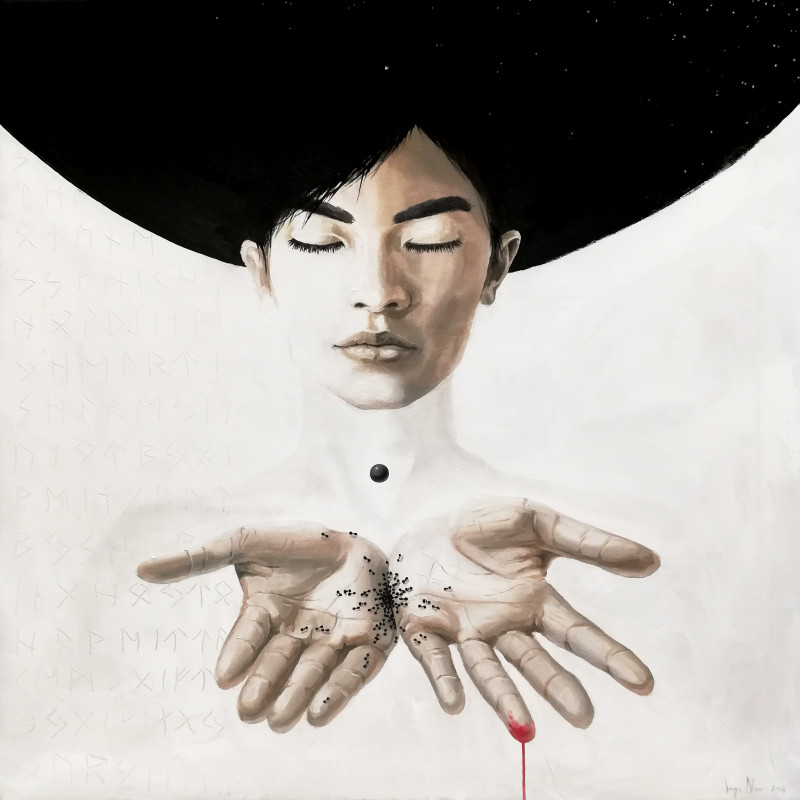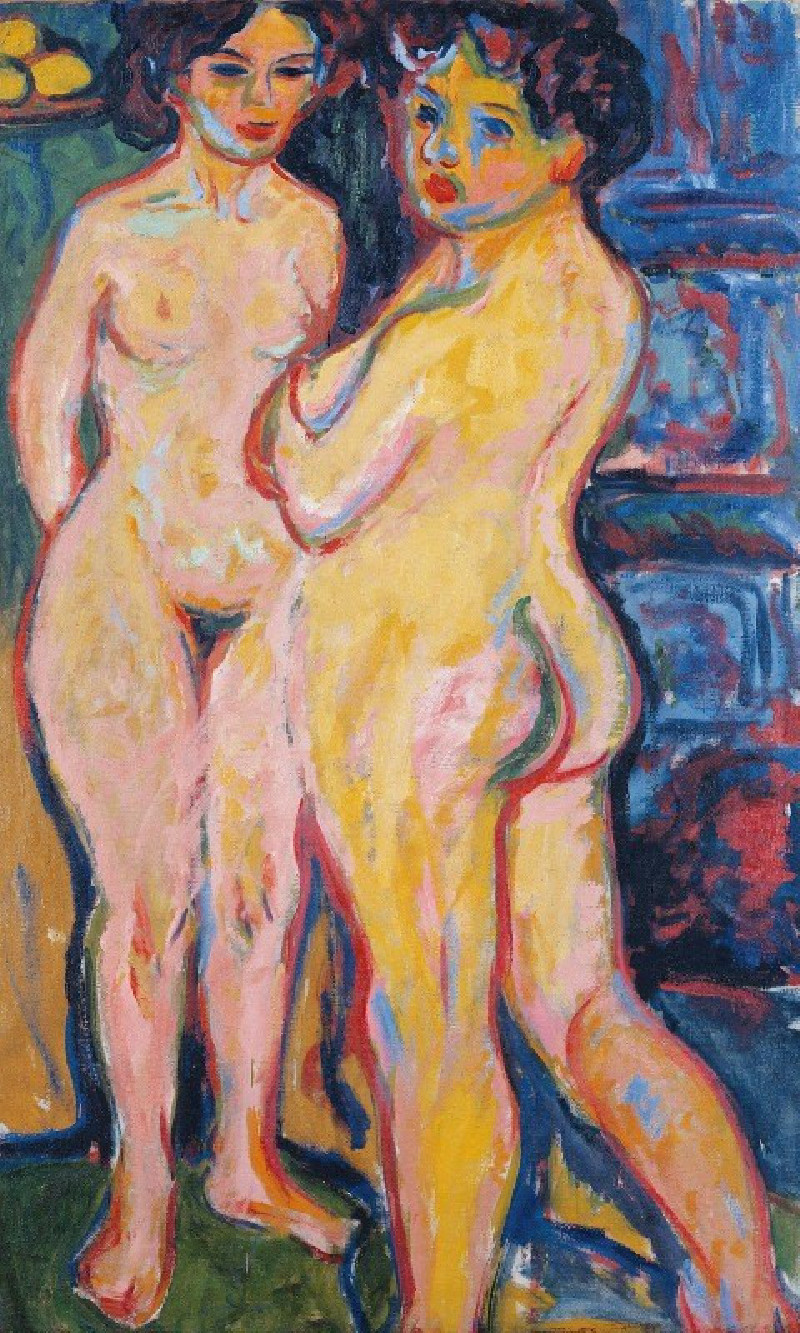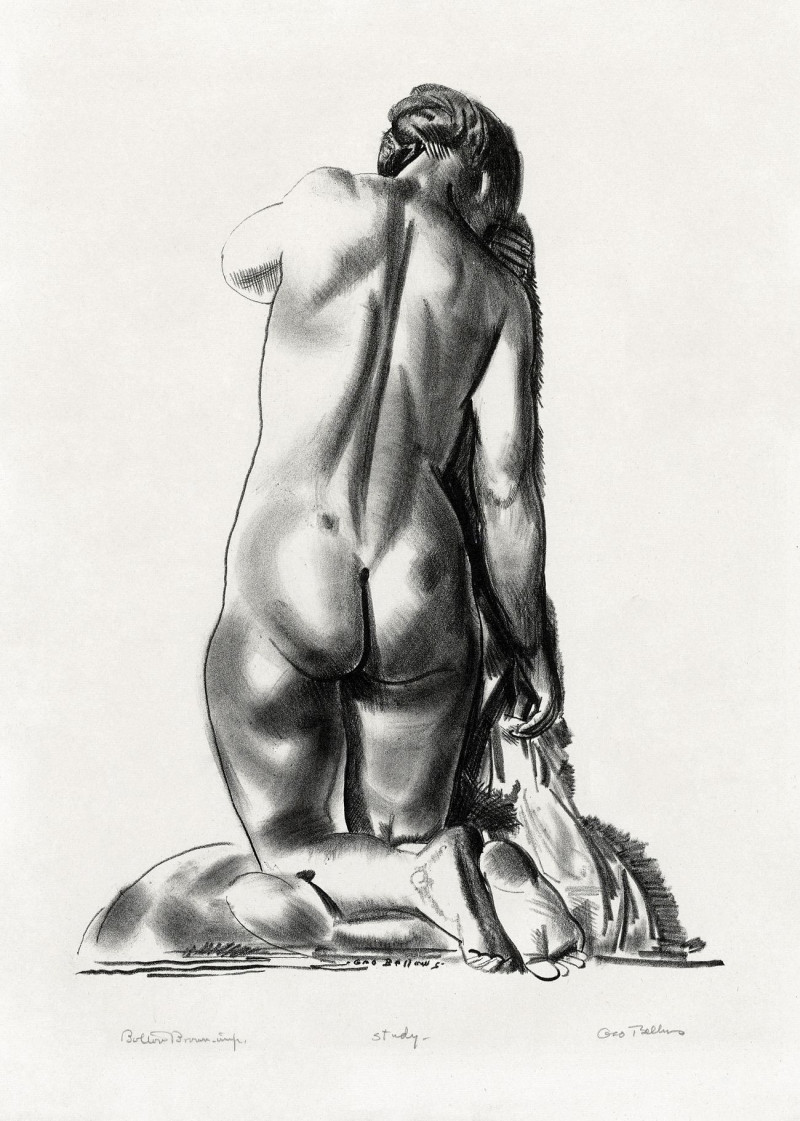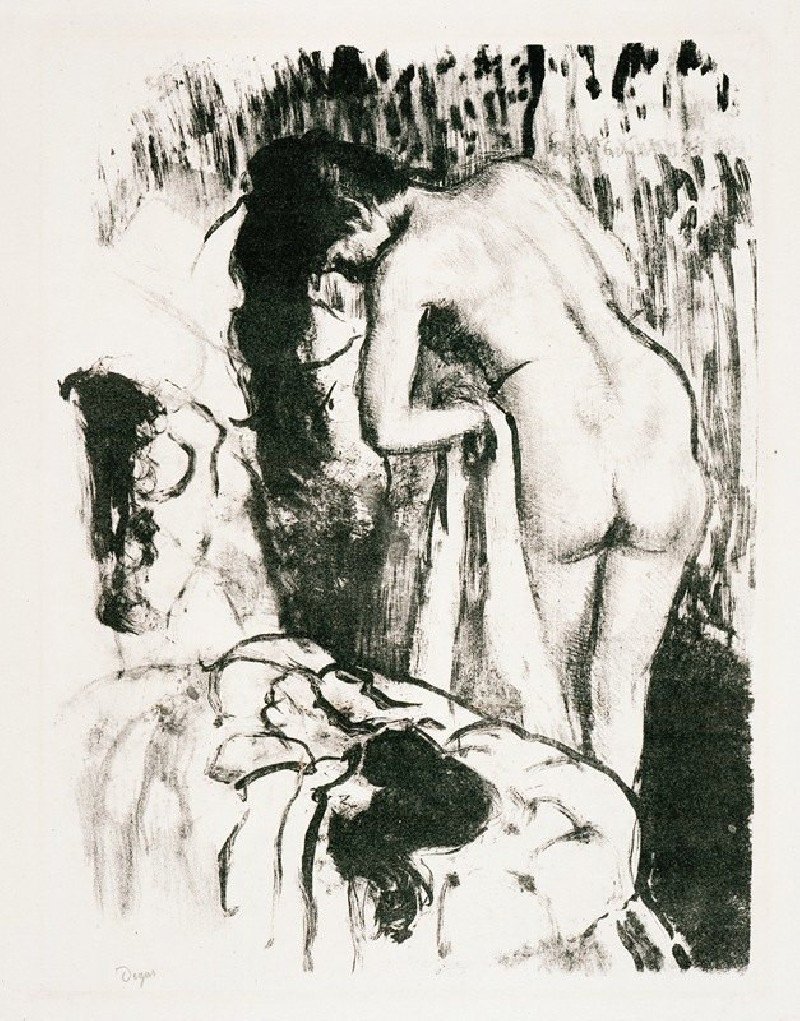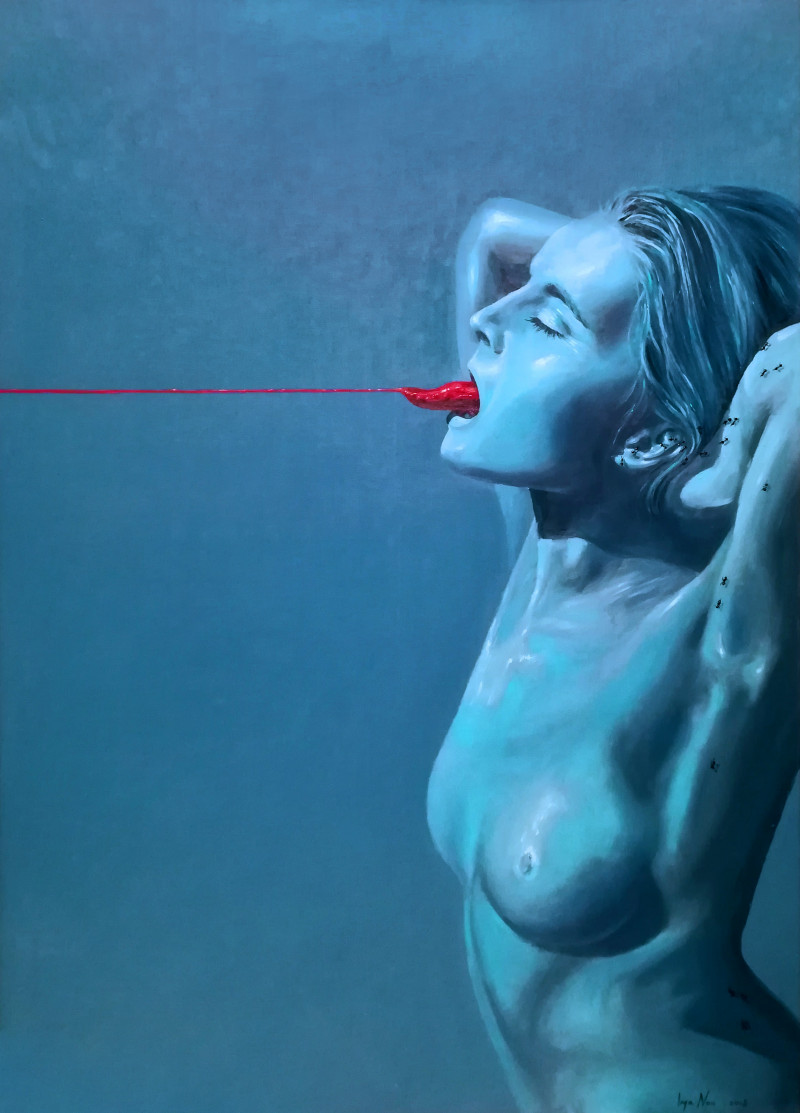Female Nude Seated (1909)
Technique: Giclée quality print
Recommended by our customers
More about this artwork
Ernst Ludwig Kirchner's "Female Nude Seated" (1909) captures the allure and dynamism that characterize much of Kirchner's work. In this evocative etching, Kirchner portrays a nude woman seated, her body portrayed with fluid, expressive lines that convey both movement and emotion. The figure's posture is relaxed yet poised, with her back slightly arched and her head turned away, suggesting a moment of introspection or detachment.The minimalist detail and the stark contrast between the bold black lines against the plain background highlights the form of the female nude, emphasizing the natural curves and the smooth, flowing outline of the body. The positioning of the hands and the stylized treatment of the hair add a distinctive touch to the artwork, showcasing Kirchner's ability to blend simplicity with a high degree of expressiveness.This piece is a beautiful example of Kirchner's exploration of the human form and his interest in conveying emotional depth through abstracted, simplified representations.
Delivery
Returns
Ernst Ludwig Kirchner (1880–1938) was one of the most important German Expressionist painters. He was a co-founder of Die Brücke, a group of German expressionist artists formed in Dresden in 1905. Die Brücke and Kirchner took inspiration from Vincent Van Gogh and Edvard Munch, as well as African and Oceanic art. They used woodblock printing as a medium to showcase their signature style: flat, unrealistic images with vivid colors. The recurring themes in Kirchner's artworks included exotic cultures, faraway landscapes, self-portraits, dancers and Berlin street life. His paintings and prints effectively portrayed non-European cultures despite the fact that he never traveled outside of Europe.


